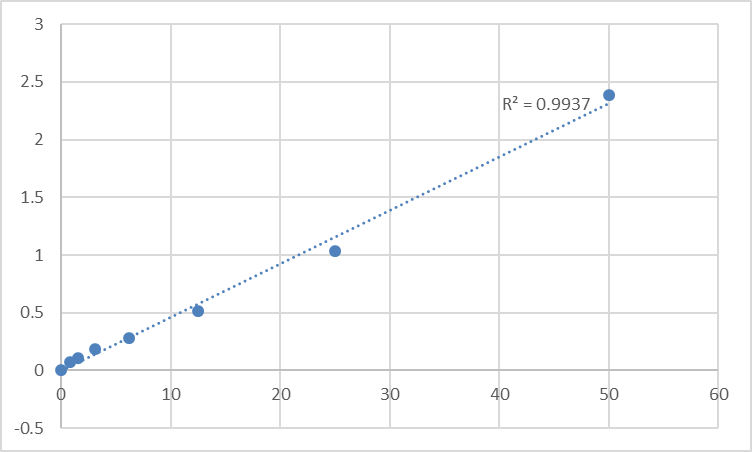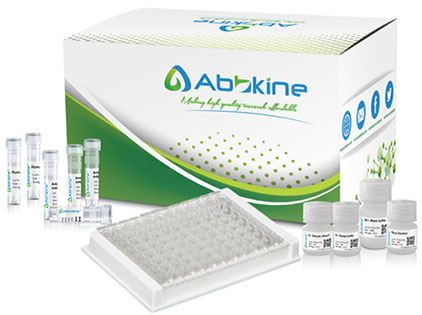| Product name | Rat Very low-density lipoprotein receptor (VLDLR) ELISA Kit |
| Reactivity | Rat |
| Applications | ELISA |
| Applications notes | This Rat Very low-density lipoprotein receptor (VLDLR) ELISA Kit employs a two-site sandwich ELISA to quantitate VLDLR in samples. An antibody specific for VLDLR has been pre-coated onto a microplate. Standards and samples are pipetted into the wells and anyVLDLR present is bound by the immobilized antibody. After removing any unbound substances, a biotin-conjugated antibody specific for VLDLR is added to the wells. After washing, Streptavidin conjugated Horseradish Peroxidase (HRP) is added to the wells. Following a wash to remove any unbound avidin-enzyme reagent, a substrate solution is added to the wells and color develops in proportion to the amount of VLDLR bound in the initial step. The color development is stopped and the intensity of the color is measured. |
| Detection method | Colorimetric |
| SampleType | Cell culture supernatants, Other biological fluids, Plasma, Serum |
| Assay type | Sandwich ELISA (quantitative) |
| Assay duration | Multiple steps standard sandwich ELISA assay with a working time of 3-5 hours. It depends on the experience of the operation person. |
| Alternative | VLDLR; RP11-320E16.1; CHRMQ1; FLJ35024; VLDLRCH; |
| Kit components | • Rat Very low-density lipoprotein receptor microplate • Rat Very low-density lipoprotein receptor standard • Rat Very low-density lipoprotein receptor detect antibody • Streptavidin-HRP • Standard diluent • Assay buffer • HRP substrate • Stop solution • Wash buffer • Plate covers |
| Features & Benefits | Rat Very low-density lipoprotein receptor (VLDLR) ELISA Kit has high sensitivity and excellent specificity for detection of Rat VLDLR. No significant cross-reactivity or interference between Rat VLDLR and analogues was observed. |
| Calibration range | Please inquire |
| Limit of detection | Please inquire |
| Usage notes | • Do not mix components from different kit lots or use reagents beyond the kit expiration date. • Allow all reagents to warm to room temperature for at least 30 minutes before opening. • Pre-rinse the pipet tip with reagent, use fresh pipet tips for each sample, standard and reagent to avoid contamination. • Unused wells must be kept desiccated at 4 °C in the sealed bag provided. • Mix Thoroughly is very important for the result. It is recommended using low frequency oscillator or slight hand shaking every 10 minutes. • It is recommended that all samples and standards be assayed in duplicate or triplicate. |
| Storage instructions | The unopened kit should be stored at 2 - 8°C. After opening, please store refer to protocols. |
| Shipping | Gel pack with blue ice. |
| Precautions | The product listed herein is for research use only and is not intended for use in human or clinical diagnosis. Suggested applications of our products are not recommendations to use our products in violation of any patent or as a license. We cannot be responsible for patent infringements or other violations that may occur with the use of this product. |
| Background | Sugie et al. (2005) classified XMEA as a form of autophagic vacuolar myopathy, characterized by intracytoplasmic autophagic vacuoles with sarcolemmal features.The clinical course was mild; the patients suffered from slowly progressive muscle weakness mainly in the legs, but did not lose their ability to walk. There was no evidence of cardiac or neural involvement. Serum creatine kinase was elevated. By electron microscopy, an excessive number of autophagic vacuoles with staining properties of lysosomes were observed. The granular and membranous material contained in these vacuoles was actively exocytosed. The authors suggested that this disorder differed from the muscular dystrophy of Duchenne and Becker and of Emery-Dreifuss as well as from X-linked myotubular myopathy. |
| Gene ID | 100008976 |
| Alternative | VLDLR; RP11-320E16.1; CHRMQ1; FLJ35024; VLDLRCH; |
| Accession | P35953 |

Fig.1. Rat Very low-density lipoprotein receptor (VLDLR) Standard Curve.

Fig.2. Abbkine ELISA kit is series of sandwich ELISA to quantitate specific protein in samples.
You must be logged in to post a review.
Reviews
There are no reviews yet.